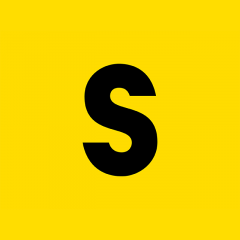

We wanted to find a model that is beneficial for the creators of type and to help them find a sustainable economical model of their existence. Would that be fair to say as a summarization?ĪK: Yes. With Fontstand, the fee is directed to renting one typeface. TT: So what you’re saying is the specific licensing model system for Fontstand, instead of Netflix where it’s a flat subscription and it’s very hard to distribute the funds in an equitable, fair way to the content providers. We think Fontstand is much fairer to the type designers or independent foundries, because they get a fixed share of the price for each rental.Īnd that was another goal for us, to make the system work well for the foundries. But they don’t make it easy to allocate the revenue to fonts and foundries at the end. You compared it to Netflix, which is a flat rate subscription-based model, and such services are already available for fonts. And in my view, it’s very innovative in type distribution. But at the same time it is important to stress that it is not only about the pricing, because the rental is a specific licensing method. Would that be a fair summarization?ĪK: Yes, you are right.

The third is a pricing model for the licensing of the typefaces that allows free trials and a rental model à la Netflix or something like that on a monthly basis that is, for upfront costs, lower than a traditional licensing model. The second is a very intuitive and easy user experience via the user interface of Fontstand. One is preselection of quality typefaces by partnering with established and well-known foundries. TT: So to summarize what you’re saying, there were three main aspects of Fontstand you guys are attempting to solve. It should be easy for the user to search, to try and test fonts. We’ve also focused on making the process to find those fonts very intuitive. Because we preselect fonts and foundries on Fonstand for quality, that makes it easier for users to find the best fonts possible.
FONTSTAND F IN FREE TRIAL FOR FREE
Fontstand’s Licensing ModelĪK: Fontstand gives users the ability to test fonts for free and rent them for a limited time for an affordable price.

But we met on this project because we both have been thinking about the ways fonts are licensed and we came to a conclusion that it’s not only a question of licensing type and fonts, but also about new ways for the users to be able to discover fonts, with so many fonts available on the market. Actually the roles are not really clearly split between me and Peter, but I would say that as things go, I am more involved with the technical part while Peter does a lot more of the foundry relations.īoth of us, we come from the perspective of type designers although Peter is a much more prolific designer, of course. So most of the conceptual work has been done by the two of us with a great help from another fellow designer, Ondrej Jób, who we invited to design the user interface. Our team is very small with just a couple of developers, and we are two partners, with Peter Biľak. TT: For the audience, I’m sure they’d be curious to know what’s your role with Fontstand? Andrej’s Role in FontstandĪK: We launched Fontstand on May 22nd, last year in Berlin after more than two years of development.

And I know you’re one of the co-founders. TT: So, let me first say I notice it’s been one year since you started Fontstand. TypeThursday: Andrej, thanks for being here for TypeThursday.Īndrej Krátky: Hello.


 0 kommentar(er)
0 kommentar(er)
